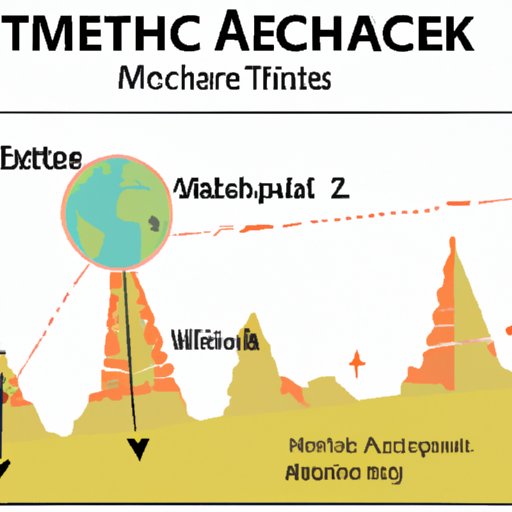Introduction
Earthquakes are a natural disaster that can strike at any time, causing widespread destruction and loss of life. For those who live in earthquake-prone regions, this threat is all too familiar. However, understanding the factors involved in earthquake formation can help us prepare for and mitigate their impact. In this article, we’ll break down the key factors involved in earthquake formation and explore how they contribute to this natural phenomenon.
Breaking it down: Understanding the different factors that lead to an earthquake
When we talk about earthquake formation, we’re really talking about the release of energy that has built up within the Earth’s crust. This buildup of energy is caused by stress and friction between different parts of the Earth’s crust. When this energy is released suddenly, it causes an earthquake. There are three key factors involved in this process: stress, friction, and the release of energy.
Inside the Earth’s crust: Delving into the origins of tectonic activity
The Earth’s crust is composed of a number of plates that move and interact with one another. These plates are fueled by the movement of molten rock below the surface. When two plates collide, they can generate enormous amounts of stress and friction, which can eventually lead to an earthquake.
The role of plate boundaries in earthquake formation
There are three main types of plate boundaries: divergent, convergent, and transform. At divergent boundaries, plates move apart from one another, creating rifts in the Earth’s crust. At convergent boundaries, plates collide and one is forced beneath the other in a process called subduction. At transform boundaries, plates slide past one another. Each of these types of boundaries can generate earthquakes, although the mechanisms behind each are different.
Magnitude matters: How size influences earthquake formation
The Richter scale is used to measure the magnitude of an earthquake, which is determined by the amount of energy released during the event. Larger earthquakes are more destructive and can cause more damage and loss of life. However, they occur less frequently than smaller earthquakes.
The impact of human activity on earthquake occurrence
Human activity can also play a role in earthquake formation. Activities such as fracking and dam-building can trigger earthquakes by altering the stress and friction within the Earth’s crust. These activities are often concentrated in earthquake-prone regions, making them particularly risky in terms of seismic activity.
Predicting earthquakes: The science behind early detection and warning systems
While we can’t predict earthquakes with perfect accuracy, seismology has enabled us to detect seismic activity early and provide warnings to those who may be affected. Seismologists use a variety of tools to measure seismic activity and track the movements of the Earth’s plates, which can help to provide early warning of an impending earthquake.
Conclusion
Earthquakes are a complex natural phenomenon, but by understanding the factors involved in their formation, we can prepare for and mitigate their impact. As we’ve seen, stress, friction, and the release of energy are all key factors in earthquake formation. By staying informed and being prepared, we can reduce the impact of earthquakes on both ourselves and our communities.
Remember, the threat of an earthquake is always present, and it pays to be prepared. Keep an emergency kit on hand and make sure your family and loved ones know what to do in the event of an earthquake. By taking the time to prepare, you can help keep yourself and those around you safe in the face of this powerful natural phenomenon.
